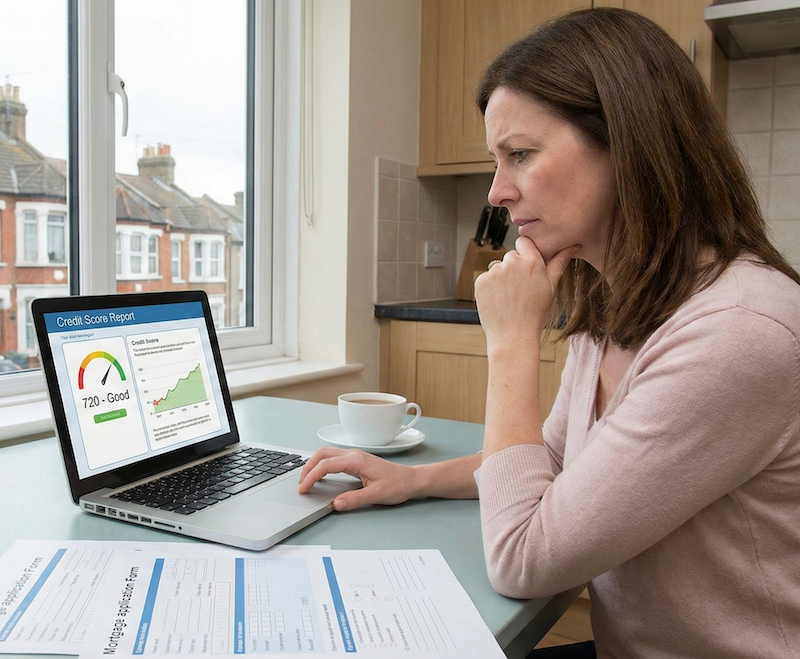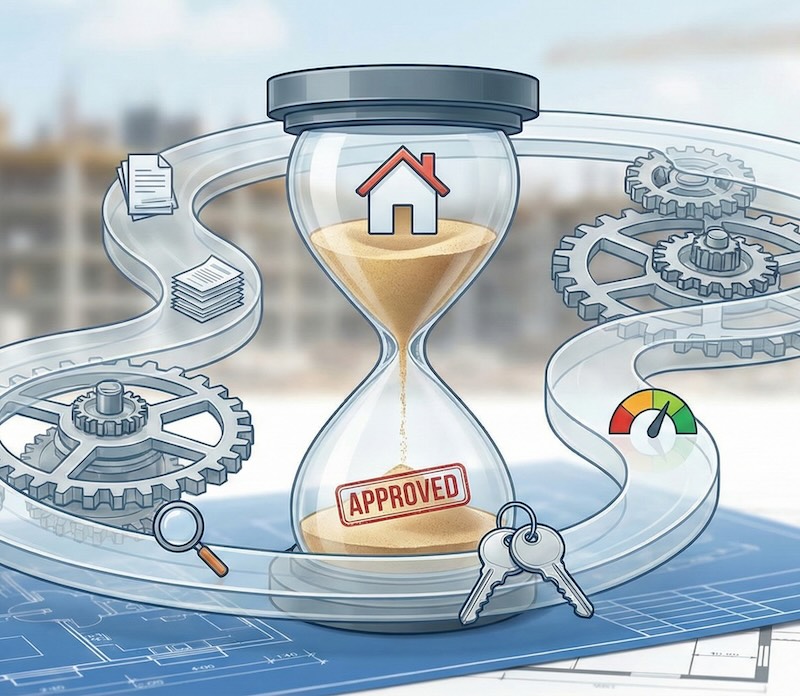Understanding Stamp Duty: A Simple Guide for Homebuyers
Table of Contents
- What Is Stamp Duty?
- Stamp Duty for First-Time Buyers
- Exemptions Up to £425,000
- Why Does This Matter?
- Stamp Duty for Second-Time Buyers and Additional Properties
- Standard Rates
- Additional Property Surcharge
- The 14-Day Rule
- How Stamp Duty Can Affect Your Budget
- Plan Ahead with Accurate Calculations
- Other Costs to Consider
- Tips for Planning Ahead
- 1. Start Saving Early
- 2. Use Online Calculators
- 3. Speak to a Mortgage Advisor
- 4. Consider Property Price Thresholds
- 5. Double-Check with Professionals
- Why Seeking Professional Advice Helps
- Real-Life Example
- Wrapping Up
When I bought my first home a few years ago, I thought I'd planned for everything. I'd spent months searching for the perfect place, crunching numbers on my budget, and working out mortgage payments down to the penny. I even had a checklist for moving day. But there was one thing I hadn't accounted for—Stamp Duty.
It wasn't until my solicitor brought it up that I realized I'd overlooked a significant expense. Suddenly, I was staring at a bill for several thousand pounds that I hadn't planned for. It was a stressful wake-up call, but it taught me an important lesson about the hidden costs of buying a home.
If you're like I was, Stamp Duty might not be on your radar. But don't worry—I'm here to help you understand what it is, how it affects you, and how to plan for it. Let's dive into everything you need to know about Stamp Duty.
What Is Stamp Duty?
Stamp Duty Land Tax (SDLT), commonly known as Stamp Duty, is a tax you pay when you purchase property or land over a certain price in England and Northern Ireland. Similar taxes exist in Scotland (Land and Buildings Transaction Tax) and Wales (Land Transaction Tax), but we'll focus on Stamp Duty in England and Northern Ireland for this guide.
Think of Stamp Duty as the government's way of recognizing and registering your property purchase. It's calculated based on the property's price, and the percentage rates vary depending on the portion of the property's value that falls within different thresholds.
It's important to note that Stamp Duty isn't added to your mortgage—it's a separate cost that you'll need to pay upfront, usually around the time of completion.
Stamp Duty for First-Time Buyers
If you're a first-time buyer, there's some good news! The government offers generous relief to help you get onto the property ladder.
Exemptions Up to £425,000
First-time buyers purchasing a property up to £425,000 are exempt from paying Stamp Duty. This means you won't pay any Stamp Duty on properties priced at £425,000 or less.
For properties priced between £425,001 and £625,000, first-time buyers will pay 5% on the portion above £425,000. However, if the property price exceeds £625,000, the first-time buyer relief doesn't apply, and you'll need to pay the standard Stamp Duty rates on the entire amount.
Let's look at an example:
Suppose you're a first-time buyer purchasing a home for £500,000.
- No Stamp Duty on the first £425,000.
- 5% Stamp Duty on the remaining £75,000 (£500,000 - £425,000) = £3,750.
So, your total Stamp Duty would be £3,750.
Why Does This Matter?
This relief can save you a substantial amount of money. Understanding how it works helps you make informed decisions about your budget and the properties you consider.
For instance, if you were contemplating between a property priced at £625,000 and one at £630,000, choosing the slightly cheaper option could save you tens of thousands in Stamp Duty.
Stamp Duty for Second-Time Buyers and Additional Properties
If you're buying your next home, a second home, or an investment property, the Stamp Duty rules change. The rates are higher, and additional surcharges may apply.
Standard Rates
For residential properties, the standard Stamp Duty rates are tiered:
- 0% on the first £250,000
- 5% on the portion between £250,001 and £925,000
- 10% on the portion between £925,001 and £1.5 million
- 12% on anything above £1.5 million
Here's how it works:
Imagine you're buying a home worth £800,000.
- 0% on the first £250,000 = £0
- 5% on the next £550,000 (£800,000 - £250,000) = £27,500
Total Stamp Duty = £27,500
Additional Property Surcharge
If you're purchasing an additional property, you may have to pay an extra 3% on top of the standard rates. This surcharge applies to second homes and buy-to-let properties.
So, using the previous example, if you're buying a second home for £800,000:
- 3% on the first £250,000 = £7,500
- 8% (5% + 3% surcharge) on the next £550,000 = £44,000
Total Stamp Duty with surcharge = £7,500 + £44,000 = £51,500
As you can see, the surcharge significantly increases the amount you need to pay.
The 14-Day Rule
Once you've completed your property purchase, you have only 14 days to file a Stamp Duty return and pay any tax due. Completion is the day when all legal documents are signed, and you officially become the property's owner.
Failing to meet the 14-day deadline can lead to penalties and interest charges from HM Revenue and Customs (HMRC). Even if no Stamp Duty is due (for example, if you're a first-time buyer purchasing a property under £425,000), you may still need to file a return.
Your solicitor or conveyancer will usually handle this for you, but it's crucial to confirm that they're taking care of it. Ultimately, it's your responsibility to ensure the payment is made on time.
How Stamp Duty Can Affect Your Budget
Stamp Duty can be a significant expense—sometimes tens of thousands of pounds. If you don't account for it early on, it can come as a nasty surprise right when you're about to complete your purchase.
Why is this so important? Because Stamp Duty is often overlooked by homebuyers who are already stretching their finances to afford a property. Not factoring it into your budget could mean you don't have enough funds to complete the purchase, potentially causing the deal to fall through.
Plan Ahead with Accurate Calculations
To avoid this, it's essential to calculate your Stamp Duty obligations as early as possible. This will give you a clear picture of the total costs involved and help you set realistic savings goals.
You can use our handy Stamp Duty Calculator to find out exactly how much you'll need to pay based on your property's price and your buyer status.
Other Costs to Consider
Stamp Duty isn't the only additional cost when buying a home. There are other expenses like:
- Legal Fees: Solicitor or conveyancer costs.
- Survey Costs: Paying for property surveys.
- Moving Expenses: Hiring a removal company.
- Mortgage Fees: Arrangement fees from your lender.
- Building Insurance: Required from the day you exchange contracts.
To get a full picture of the costs involved, check out our Hidden Costs Calculator.
Tips for Planning Ahead
Here are some practical steps to help you prepare for Stamp Duty and other costs:
1. Start Saving Early
Include Stamp Duty and other fees in your savings plan from the beginning. This ensures you're not caught off guard when the time comes to pay.
2. Use Online Calculators
Make use of online tools to estimate your costs. Our Stamp Duty Calculator and Affordability Calculator can help you understand what you can afford.
3. Speak to a Mortgage Advisor
A mortgage advisor can guide you through the process, help you find the best mortgage rates, and ensure you're aware of all the costs involved. They can offer personalized advice based on your situation.
4. Consider Property Price Thresholds
If you're a first-time buyer, purchasing a property under £425,000 can save you from paying Stamp Duty. Similarly, being mindful of the £625,000 threshold can maximize your first-time buyer relief.
5. Double-Check with Professionals
Always confirm details with your solicitor or conveyancer. Make sure they're handling the Stamp Duty return and payment, and ask if there are any other costs you should be aware of.
Why Seeking Professional Advice Helps
Buying a property is one of the biggest financial decisions you'll make. With so many factors to consider—mortgage rates, Stamp Duty, legal fees—it's easy to feel overwhelmed.
That's where a mortgage advisor comes in. They can:
- Help you understand the full cost of buying a property.
- Find mortgage products with the best rates for your circumstances.
- Guide you through the application process.
- Offer advice on budgeting and financial planning.
At Mortgage Mapper, we connect you with experienced advisors who put your needs first. They can help simplify the process and give you peace of mind.
Real-Life Example
Let me share another personal story. My friend Sarah was excited to buy her second property—a charming cottage in the countryside. She'd budgeted carefully but didn't realize that buying a second home came with the additional 3% Stamp Duty surcharge.
When her solicitor informed her of the extra £12,000 she needed to pay, she was shocked. Fortunately, she was able to adjust her plans, but it added unnecessary stress to the process. If she'd consulted a mortgage advisor earlier, she could have been better prepared.
Wrapping Up
Stamp Duty may not be the most exciting part of buying a home, but understanding it is crucial. Here's a quick recap:
- Stamp Duty is a tax on property purchases over certain thresholds.
- First-time buyers get relief on properties up to £425,000.
- Second homes and buy-to-let properties may incur a 3% surcharge.
- You have 14 days from completion to pay Stamp Duty.
- Planning ahead can save you from unexpected costs.
Remember, knowledge is power. By educating yourself on Stamp Duty and other expenses, you can make informed decisions and avoid surprises.
If you have questions or need personalized advice, consider speaking with a professional. Our team at Mortgage Mapper is here to help you navigate the journey to homeownership.
Ready to take the next step? Use our Stamp Duty Calculator and Affordability Calculator to start planning today.
Happy house hunting—and may your journey to your new home be a smooth one!
![What Is The Minimum Down Payment For A House In The Uk? [2025]](https://mortgagemapper.com/featured-images/the-definitive-guide-to-the-minimum-down-payment-for-a-house-navigating-the-2025-uk-property-market.png)

